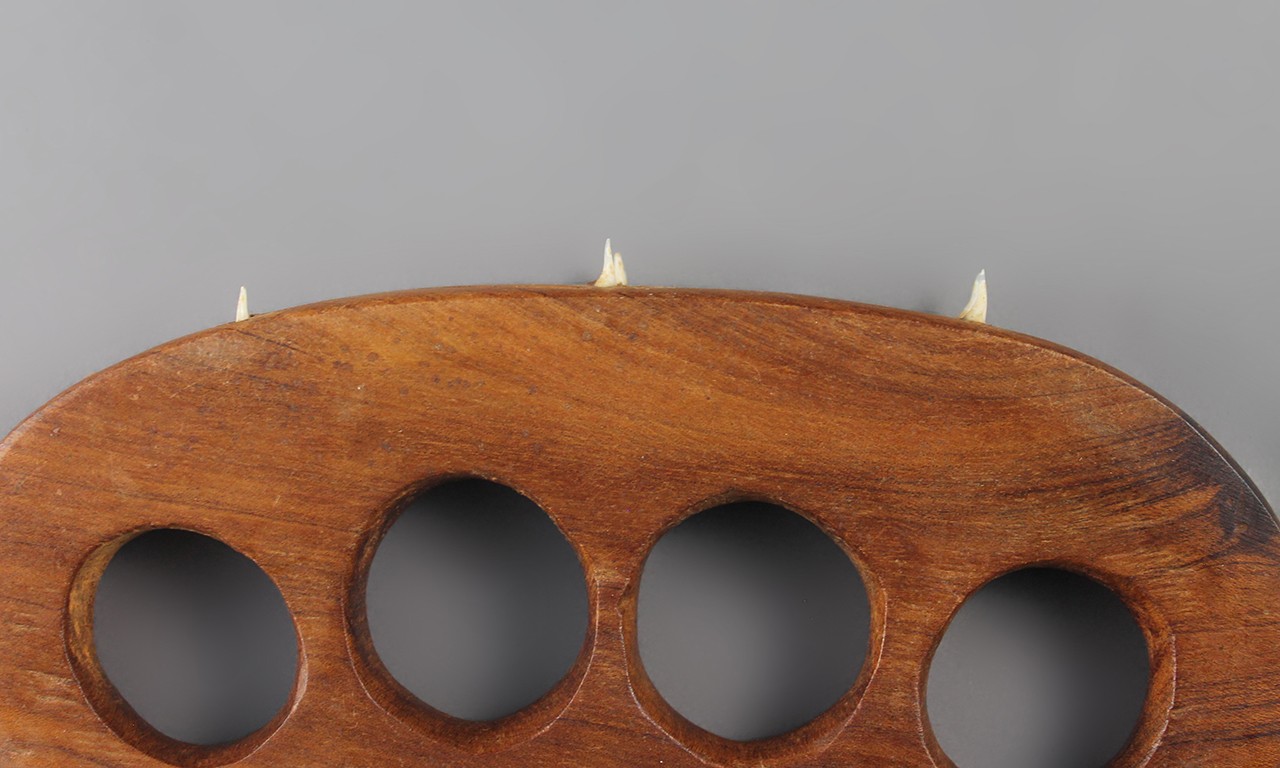 |
Detail of 2003.50.37
Gift of William R. Moran |
Weird and Just Downright Weird
As part of an ongoing project to classify the Bowers Museum’s collections, our Collections team has reached many an oddball object that does not easily fall into standard categories. Many more have outlandish or wonderfully rare names. Today’s post is a celebration of these objects that are atypical in form or name. After sifting through whatnots, silent butlers, patty irons and more, this post presents five weird and wonderful objects, looking at the histories of their curious names and examining their unique functions.
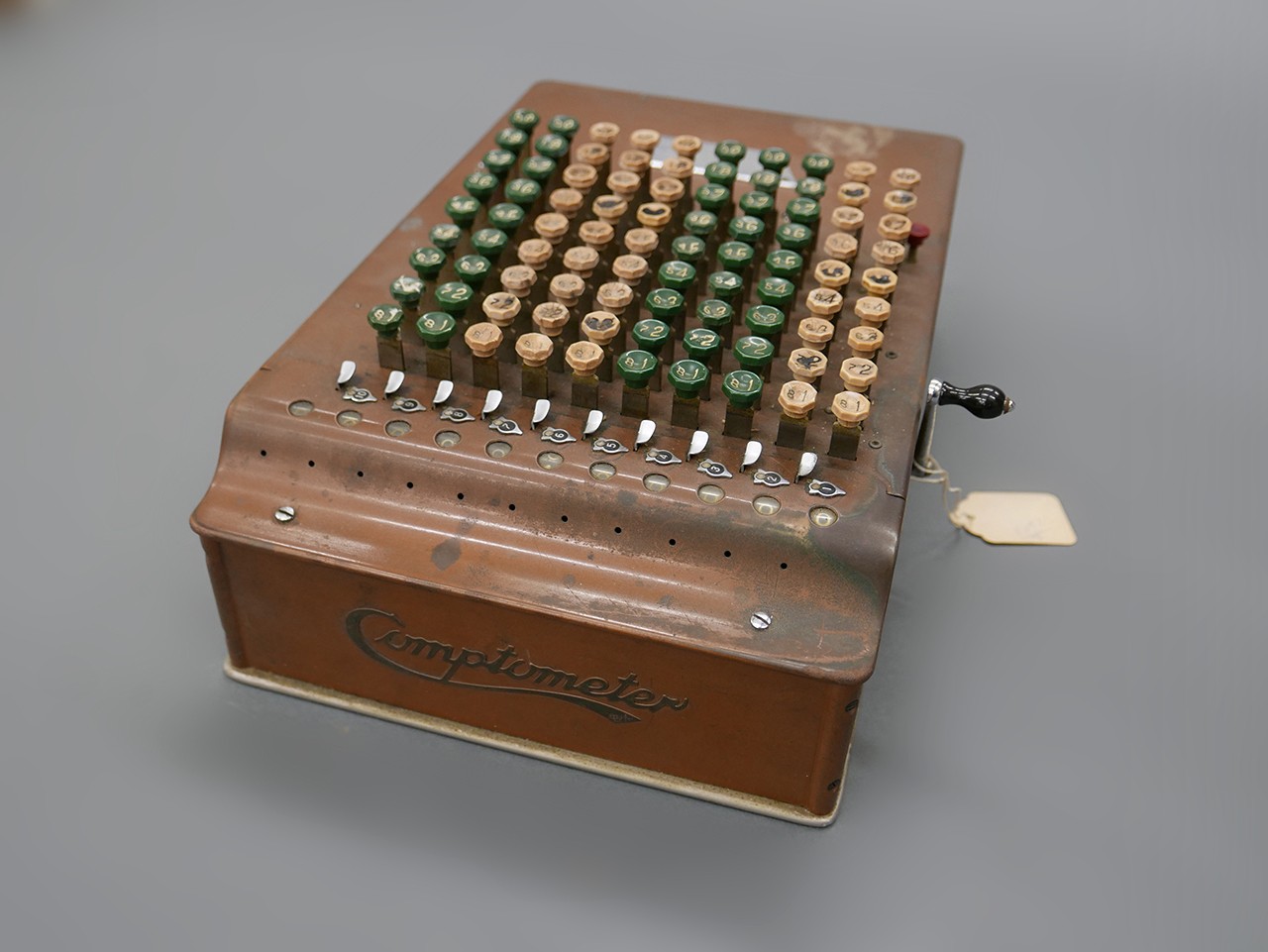 |
Comptometer, c. 1920
Felt & Torrant Mfg. Co.; Chicago, Illinois
Metal
77.60.1
Gift of Mr. and Mrs. Stuart Weiner |
Mathlete’s Dream
From compt, the old English word for count, and -ometer, a suffix used for measuring devices, this comptometer’s function is more closely associated with its name than perhaps any other object in this post. Comptometers were forerunners to calculators that operated mechanically rather than using electronics. The device was first patented in the United States in the late 19th century and used consistently up until around the 1970s when electronic calculators began to overtake these older models due to their increasingly efficient mathematical calculations. This Felt & Torrant Manufacturing Company comptometer was purchased from one of the finest boutiques Los Angeles had to offer, Cut/Rate Office Equipment (now a parking lot opposite to the LA Convention Center).
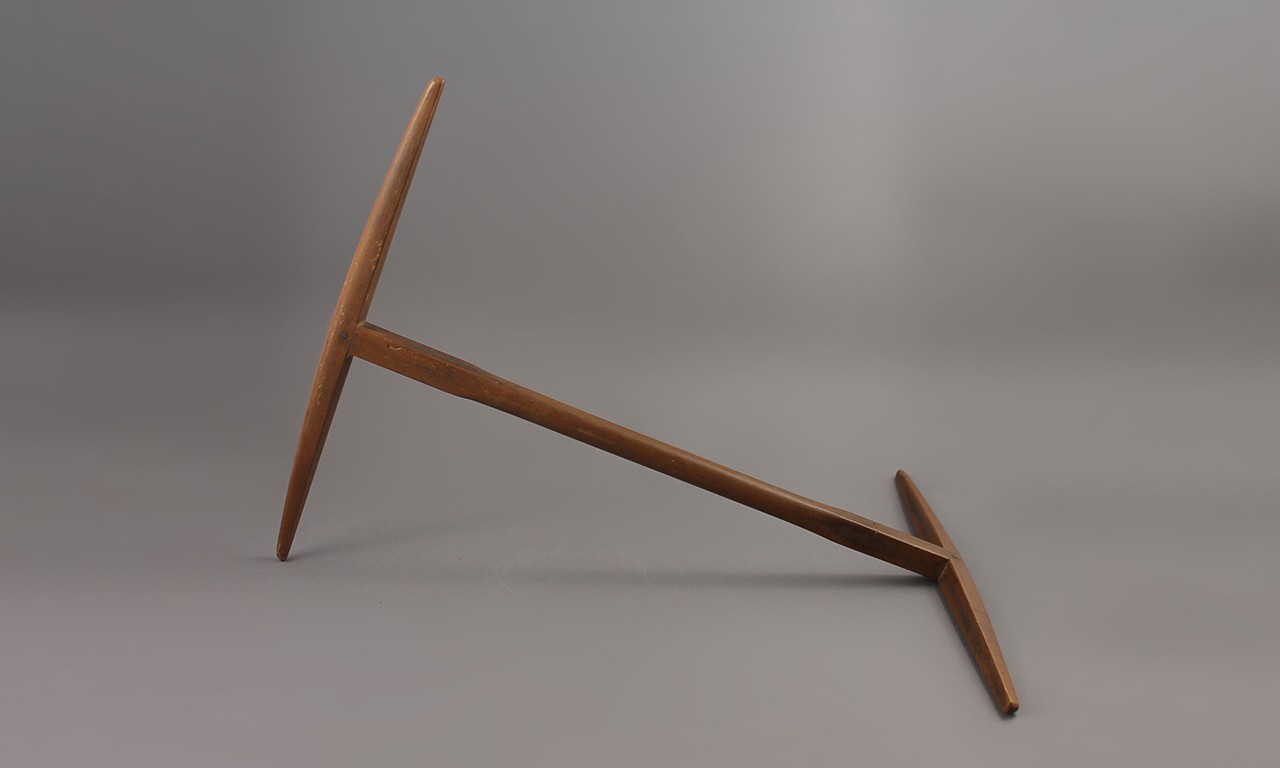 |
Niddy-Noddy, 20th Century
Unknown Maker; probably United States
Wood; 18 in.
40581H
Gift of Natalie Wood |
Nods in Agreement
If you have ever skeined yarn before this will not be your first niddy-noddy rodeo, but for the rest of us the unique uppercase ‘I’ rotated 90 degrees shape of the weaving tool does not immediately belie its function. Weavers use niddy-noddies by wrapping yarn around alternating ends of the two bars so that it creates a long angular loop. While the yarn is pulled tight smaller ties are used to bundle the four sections created by stretching the yarn in this way. Once the yarn is bundled it can be pulled off the niddy-noddy and twisted to create a skein, one of the standard methods for storing yarn. The origin of the term likely comes from the same obsolete phrase, which was used to refer to things that wobbled back and forth unsteadily—likely a reference to how unstable the shape of the tool is.
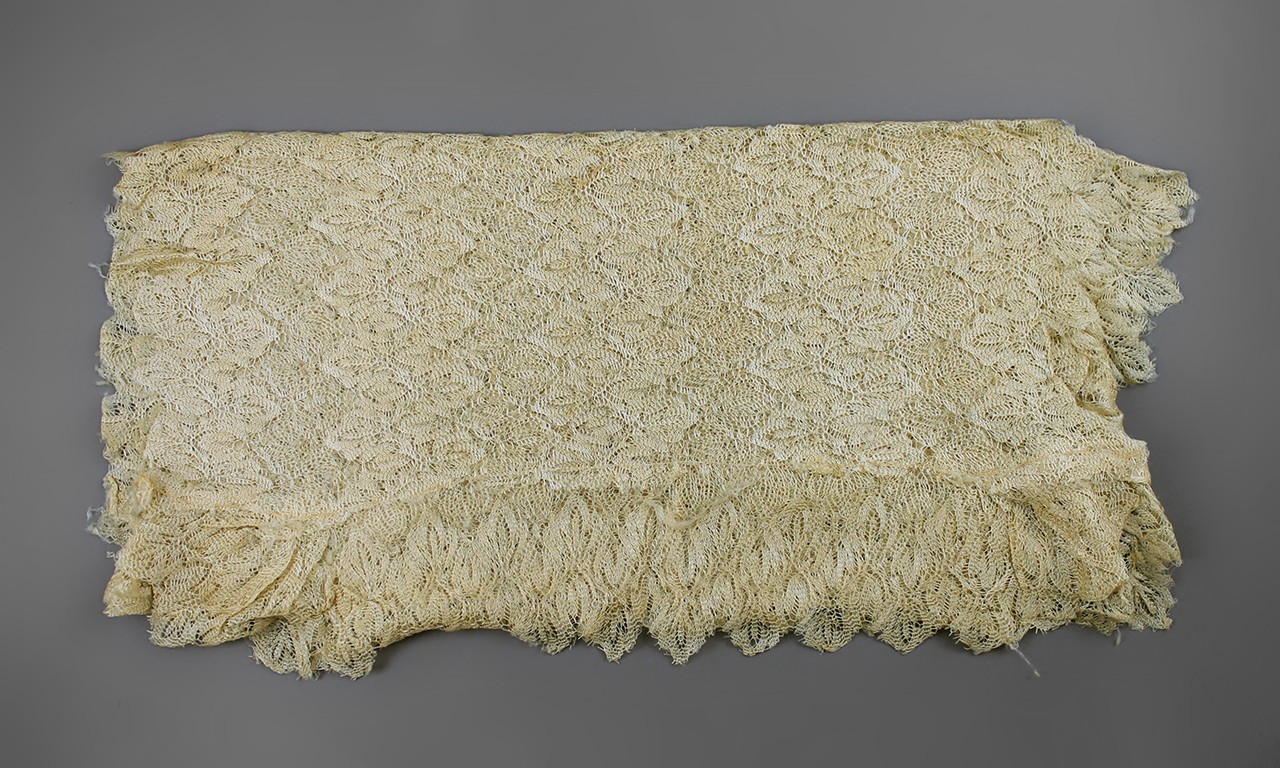 |
Fascinator, 19th to early 20th Century
Unknown Maker; probably United States
Ivory lace
7561
Gift of Anna Tiede |
Intriguing Hats
This headpiece is downright fascinating, though its name, fascinator, comes from an entirely different meaning of the word. Fascinators date back to at least the 17th century and were small shawls made of white lace that were worn on women’s heads much in the same way that a bonnet would have been. Rather than just resting atop the head or being secured with a clip, these hats were fastened beneath the chin. In the 20th century the name came to be used as a sweeping title for small hats worn by women on formal occasions.
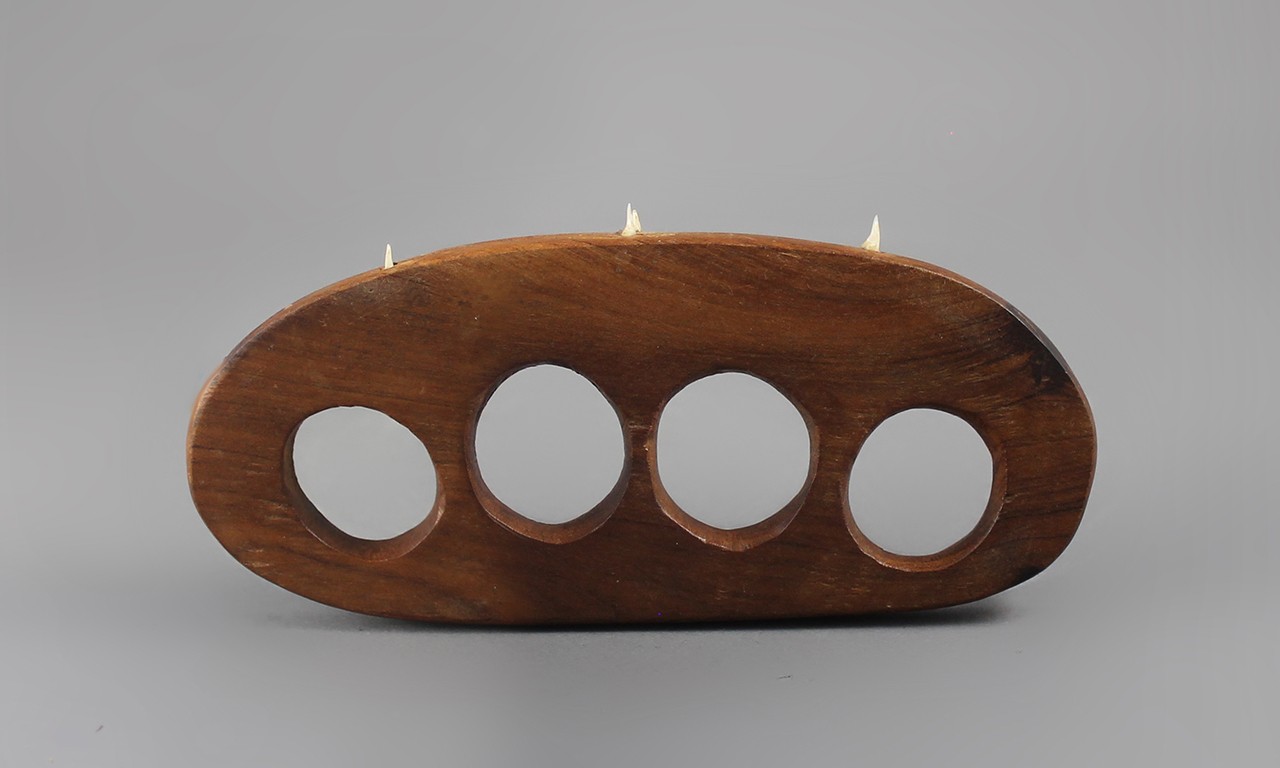 |
Knuckle Duster, early to mid 20th Century
I-Kiribati culture; Gilbert Islands, Kiribati, Micronesia
Wood and shark teeth; 1/4 x 6 3/8 in.
2003.50.37
Gift of William R. Moran |
Dust Up
The term knuckle duster is not commonly used in the United States, but in England refers to a handheld weapon that adds additional weight to one’s punch while simultaneously protecting the user’s fist from the force of impact. Because many of these are made from brass, they are better known as brass knuckles in the United States. While these tools are staples of crime dramas and gangster films, they were developed in parallel in Micronesia’s Gilbert Islands. In Bring a Shark to a Knife Fight: Short Blades of the Gilbert Islands we looked at some of the early ethnographies of Gilbert Island weapons, though their usage is not specifically mentioned, they were noted. Like other weapons they were probably used in the large battles that took place on the islands. It should be noted that the ratio of the size of the shark teeth to the overall size of the object may indicate a more contemporary make.
 |
What’s-It, 20th Century
A. Ford; probably United States
Wood; 7/8 x 8 3/16 in.
34198
Gift of Emery Perkins and Elsie Chace |
No Really, What Is It?
While this object may appear unassuming, it caught our eye when putting together a list of oddities for this post due to its unusual name in our database: whatsit. Unlike the other odd names in this collection though, the whatsit is just a thingamajig, doohickey or unidentified ground-level object. It was donated to the Bowers in 1967 as part of a sizable donation of woodworking tools from the donor’s late father. The expert brought in to identify the object at the time had no idea what they were looking at and used the phrase what’s-it to sign that lack of clarity. As records were first digitized in the late 20th century that name made its way into the database. Based on the shape and size of the object it was almost certainly used as a busk, a rigid, rounded piece of wood, ivory or bone that is used to maintain the shape of a corset.
Text and images may be under copyright. Please contact Collection Department for permission to use. References are available on request. Information subject to change upon further research.







Comments